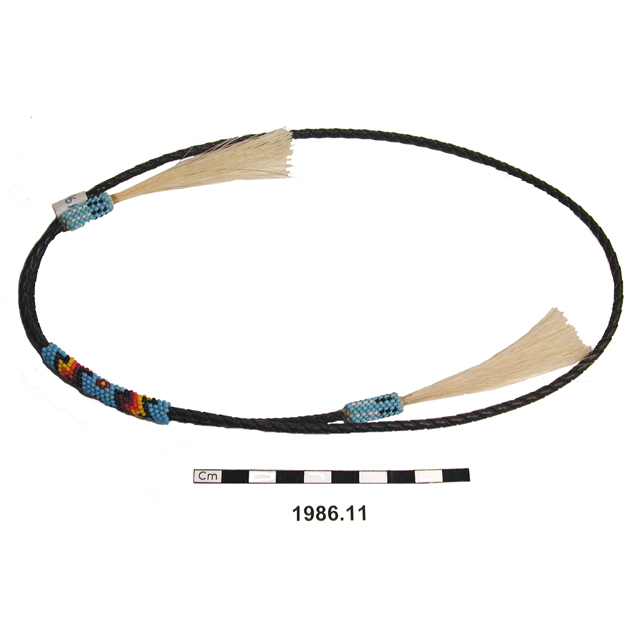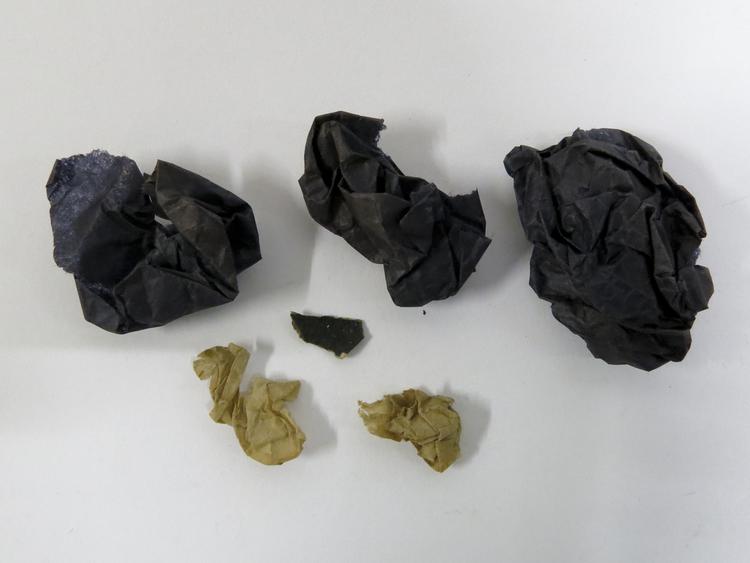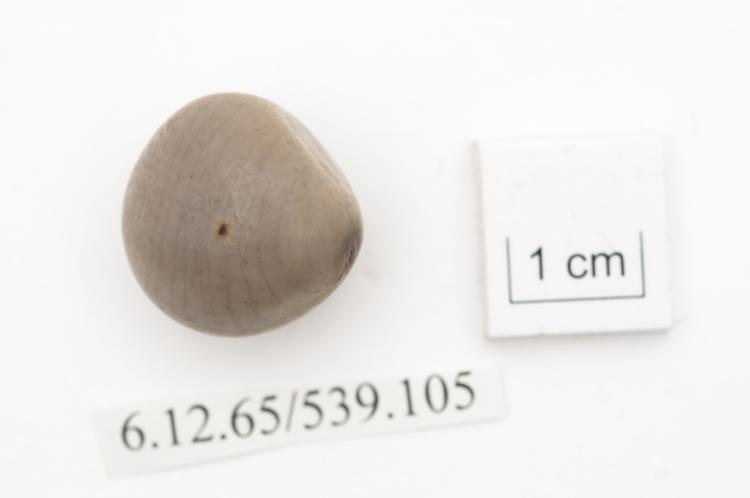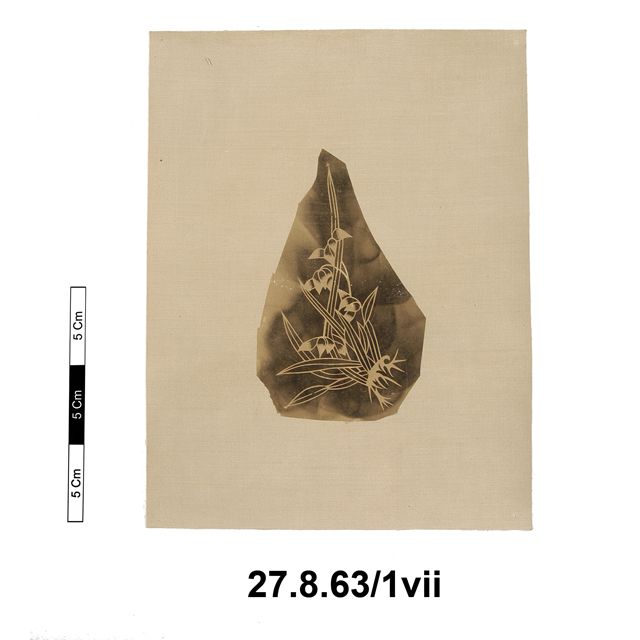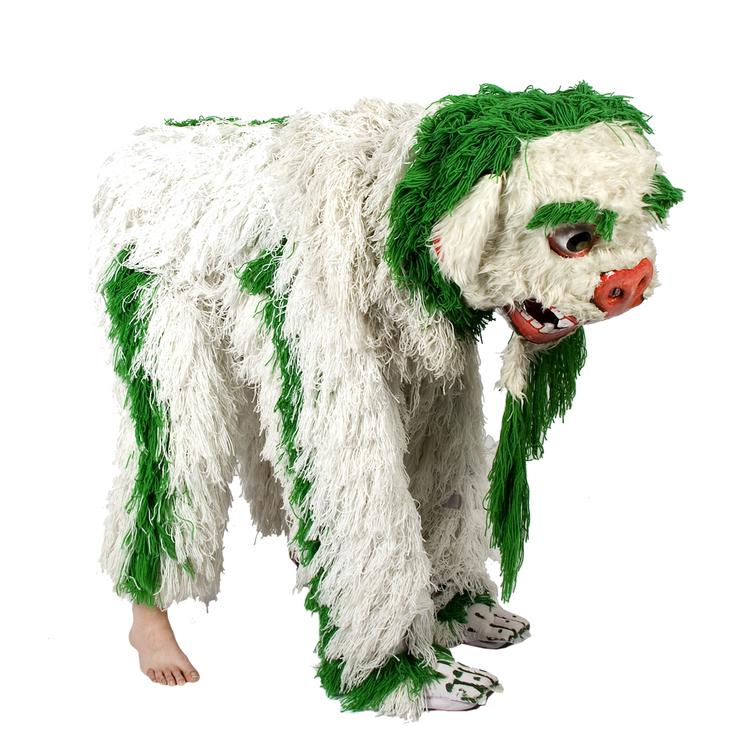
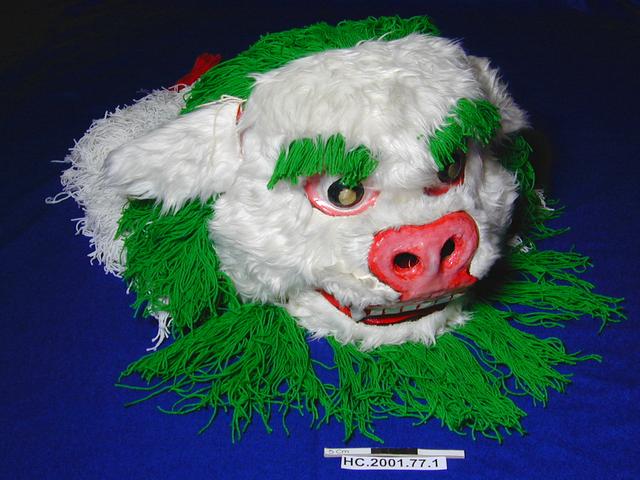
Tail for a snow lion costume with green woollen strands and a stuffed cotton handle. Held through a hole in the rear of the cotume, as worn by an adult on all fours or two adults.
How is it used?
The Snow Lion Dance can be performed by monks at the Buddhist monastery or by lay people and is often performed with four dancers in two lion costumes dancing in time with each other. The costume includes an elaborate mask with rolling eyes, gnashing teeth and twitching ears which are operated by strings inside the head of the mask. The 'snow lion' dances, leaps, and rolls around the stage until it collapses on the stage panting. In some dances the 'lion' leaves the monastery and visits local houses to collect donations. For Tibetan people the 'snow lion' represents undying cheerfulness and fearlessness and is danced both to show the elegant qualities of the enlightened mind of Buddhist belief and also for entertainment. Dances are accompanied by a variety of musical instruments such as: dranyen, the six stringed lute, gyangling, the shawm, pi wang, the fiddle and gyumangs, the dulcimer, and also drum, cymbals and flute. The Snow Lion is one of the Four Dignities, mythical animals which represent various qualities of the Bodhisattva attitude, such as strength, protection and cheerfulness. These animals are the Dragon, the Tiger, the Garuda and the Snow Lion.
The Snow Lion is also seen in carvings and sometimes the throne of Buddha is depicted with eight Snow Lions on it. In this case, they represent the eight main Bodhisattva-disciples of Buddha Shakyamuni, the historical Buddha.
Two Tibetan buddhist heroes, the yogi and poet Milarepa and hero King Gesar are said to have been raised by Snow Lioness in the mountains of Tibet, suckling on her milk.
Who is it used by and why them?
Tibetan people living across the world use this mask. China began invading Tibet in 1949, and within a few years many Tibetans fled with their spiritual leader the Dalai Lama, across the Himalayas to India and Nepal. Tibetan people forced to live outside their home country are trying hard to preserve their arts and culture. Traditional dances, such as the Snow Lion Dance, have now been adapted by touring companies and are also performed as a tourist spectacle in Tibet, China and the West. A pair of 'snow lions' has been chosen as a symbol of Tibetan unity, by the Dalai Lama, to appear on the Tibetan flag and is seen holding the three sacred jewels, the dharmachakra.
This mask and costume first came to the museum from the Tibet Foundation here in London, but probably originally belonged to Gangjong Doeghar - "The Land of Snows' Dance Troupe" – who come from the Tibetan Institute of Performing Arts (TIPA) in Kalimpong, India.



